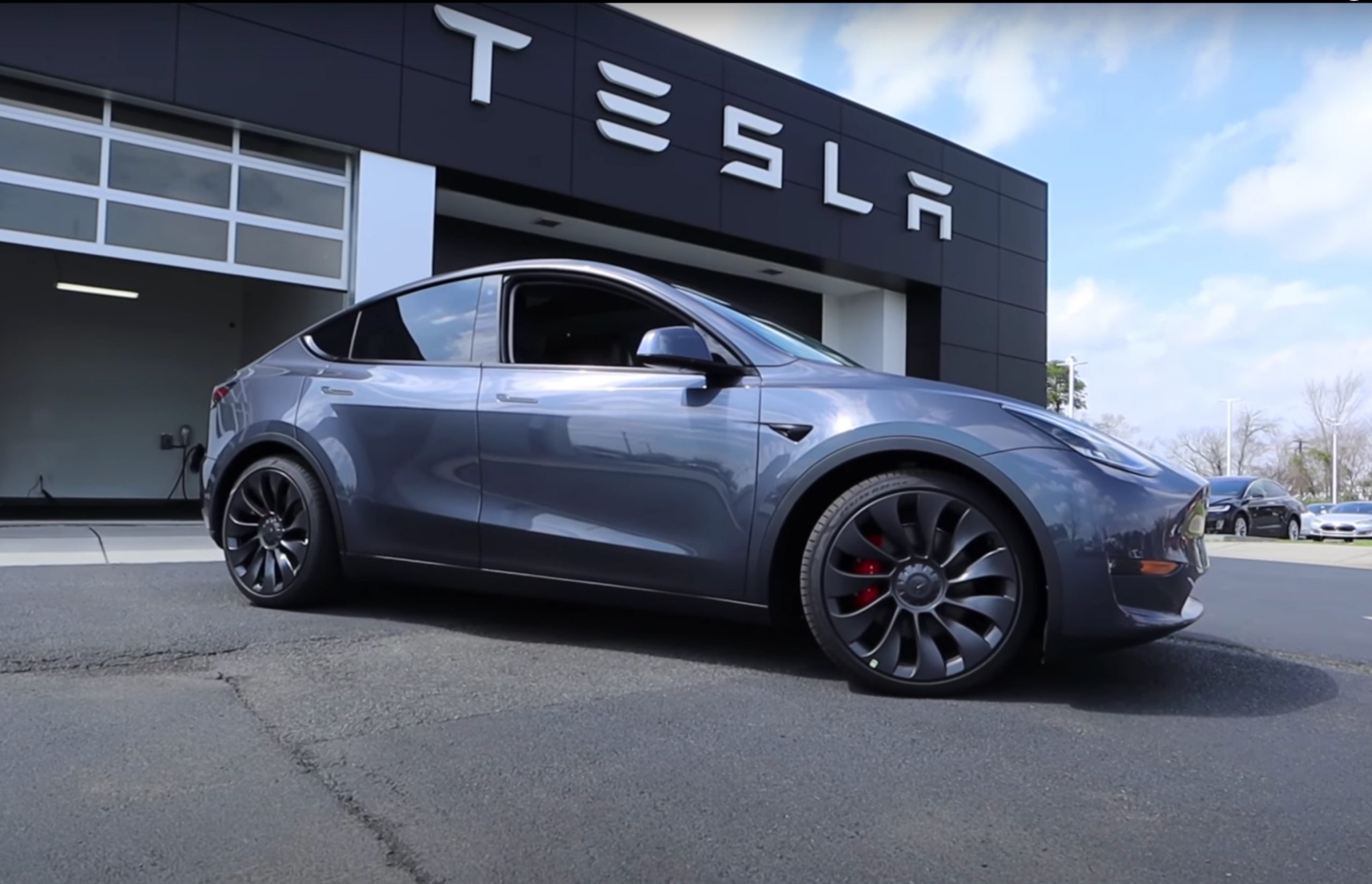
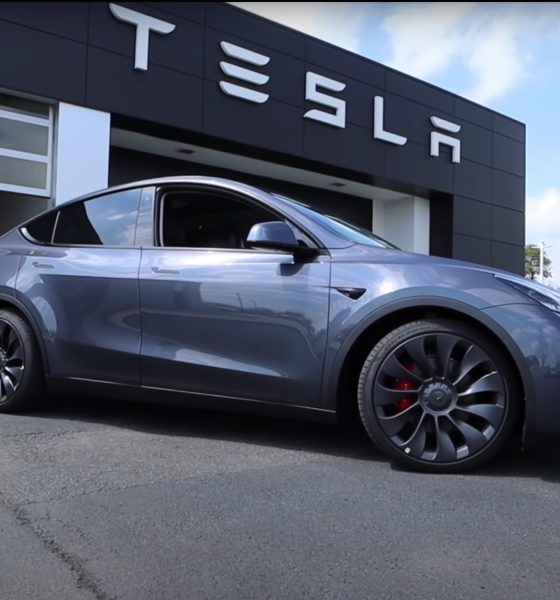
News
Tesla’s tumultuous relationship with Edmunds is based on love, respect, and improvement
Tesla and automotive information resource Edmunds have had an up and down relationship throughout the years. Many Tesla-loyal EV enthusiasts claim the publication has a vendetta against the Silicon Valley-based electric carmaker. Still, the truth remains that Edmunds has plenty of respect for Tesla and its cars. In a video, Edmunds‘ Manager of Feature Content Carlos Lago outlined not only what Tesla could do better with its Model Y, but also what other carmakers can learn from the hottest company in electric transportation.
Of course, many Tesla owners hold an uncanny loyalty to the carmaker who manufactured their electric vehicle. It is normal and expected. When someone spends at least $35,000 on a car, they’re going to make sure they respect the brand and its ideals. Tesla is no different, but the obsessive nature of the company’s vehicle owners makes the auto manufacturer nearly one of a kind. With Elon Musk at the helm calling the day-to-day shots, the company continues to revolutionize the idea of an electric vehicle, proving to everyone that the battery-electric powertrains don’t have to be “ugly and slow and boring like a golf cart,” like he once said on 60 Minutes.
We really, really like Tesla vehicles, and we can prove it:https://t.co/nhexJgNKFK pic.twitter.com/upTCGtG6RM
— Edmunds (@edmunds) June 8, 2020
And, to be fair, Musk’s company has proven that. Tesla has done more than enough to rid the world of the idea that a battery-powered car is a slow and ineffective mode of transportation. This idea does not mean that Tesla’s are perfect, and there are things that the company could improve on for future builds of their vehicles. Edmunds was more than happy to throw a few suggestions out there.
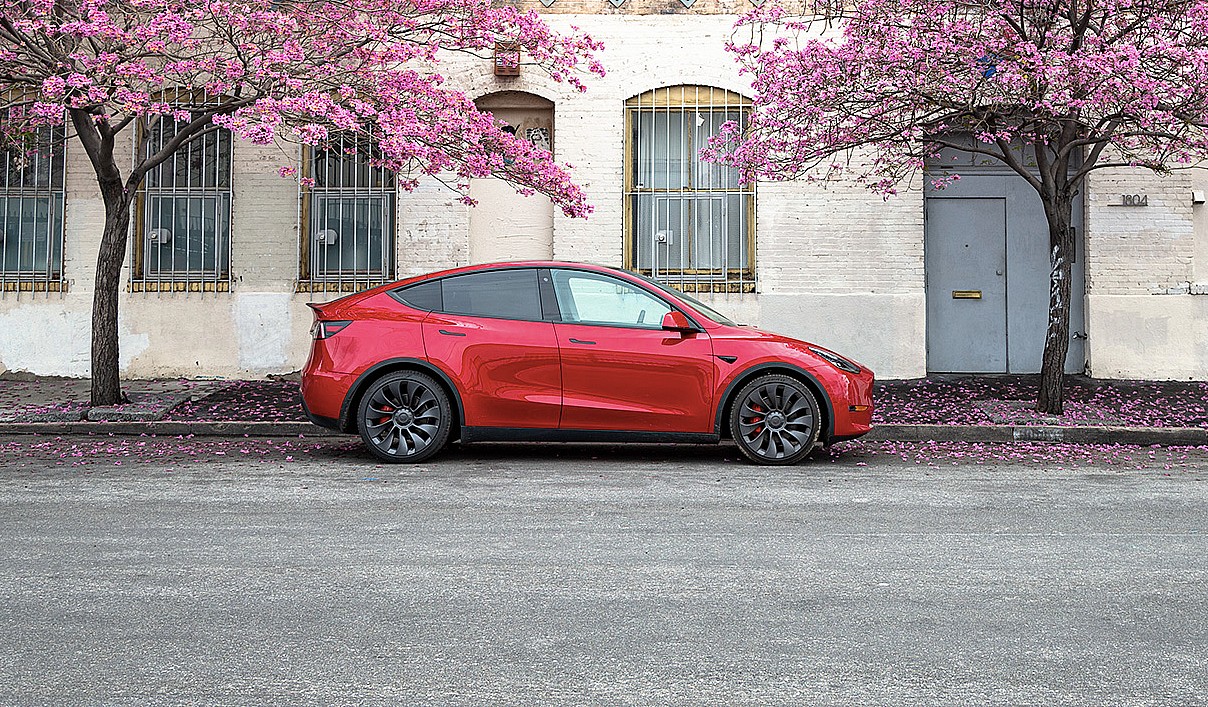
The improvements that Edmunds would like to see is not indicative of a belief that Tesla has a lack of quality in their cars. When the publication’s review of the Model 3 revealed some issues with panel gaps and overall build quality, Tesla improved upon the issue by confronting it head-on. One of Tesla’s most vocal critics in Bob Lutz even admitted that the Model 3’s build quality was “world-class” after the suggestions, and the improvements won the vehicle Edmunds’ “2020 EV of the Year” award.
For the most part, Tesla’s vehicles have culminated in primarily positive reviews from Edmunds. Most recently, the Model Y won over Lago in a comprehensive study that highlighted Tesla’s improved build qualities and impressive performance standards.
The Model Y crossover could be Tesla’s most popular vehicle to date. The combination of white-knuckle performance with the crossover body style that has quickly become the most popular in the U.S. launches the car into the category of massively appealing.
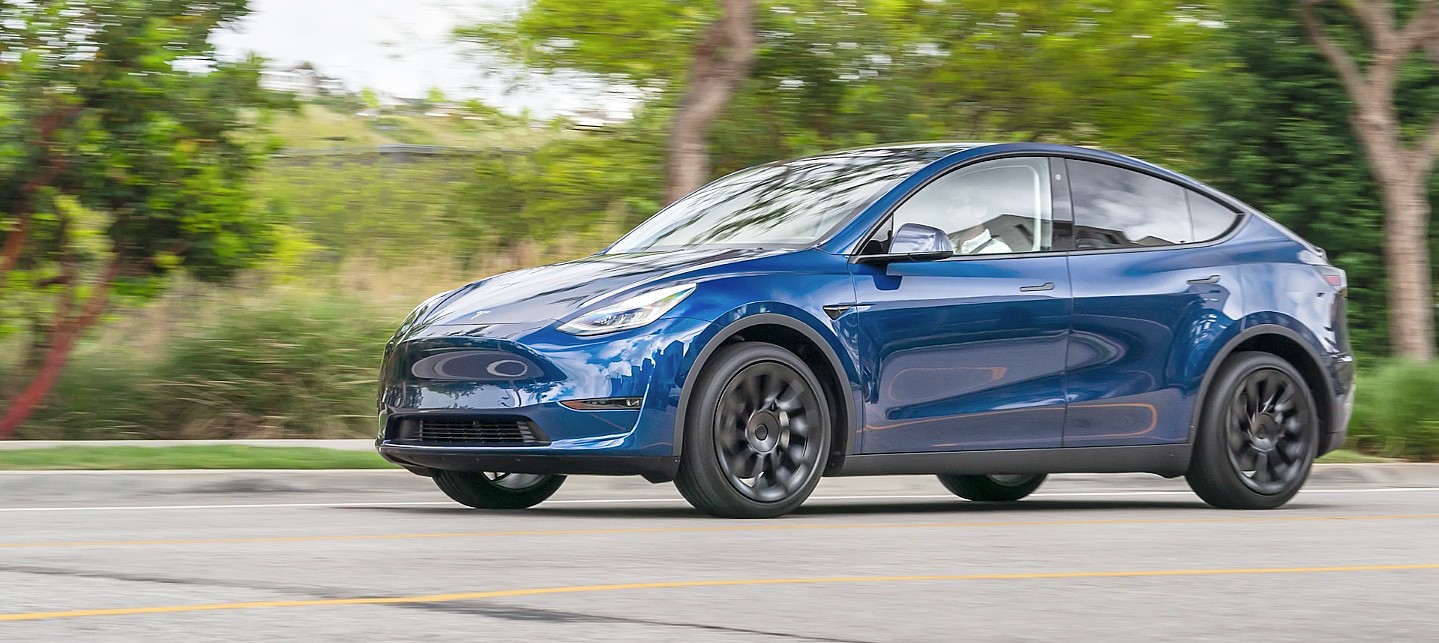
If Tesla can dial in a few changes that Edmunds suggests, there is a considerable chance that the Model Y can become the most popular car, EV or not, in the country. The company’s growing appeal across the globe has drawn attraction from the world’s biggest brands, who have designed their newest vehicles after Tesla’s technology and minimalist design.
Time after time, Tesla-inspired tech shows up on vehicles outside of the EV sector. The company’s sales figures, combined with customer loyalty, make Tesla a force to be reckoned with not only now, but also in the future.
Before taking Edmunds‘ suggestions as a source of negativity, try and frame it as constructive criticism. Tesla’s vehicles are not perfect, and the constant attention to detail and thirst for improvement is what has made the company so successful in the twelve years it has been building electric vehicles.
Watch Edmund’s Carlos Lago’s Long-Term review of the Model Y below.

Elon Musk
Elon Musk and Tesla AI Director share insights after empty driver seat Robotaxi rides
The executives’ unoccupied tests hint at the rapid progress of Tesla’s unsupervised Robotaxi efforts.
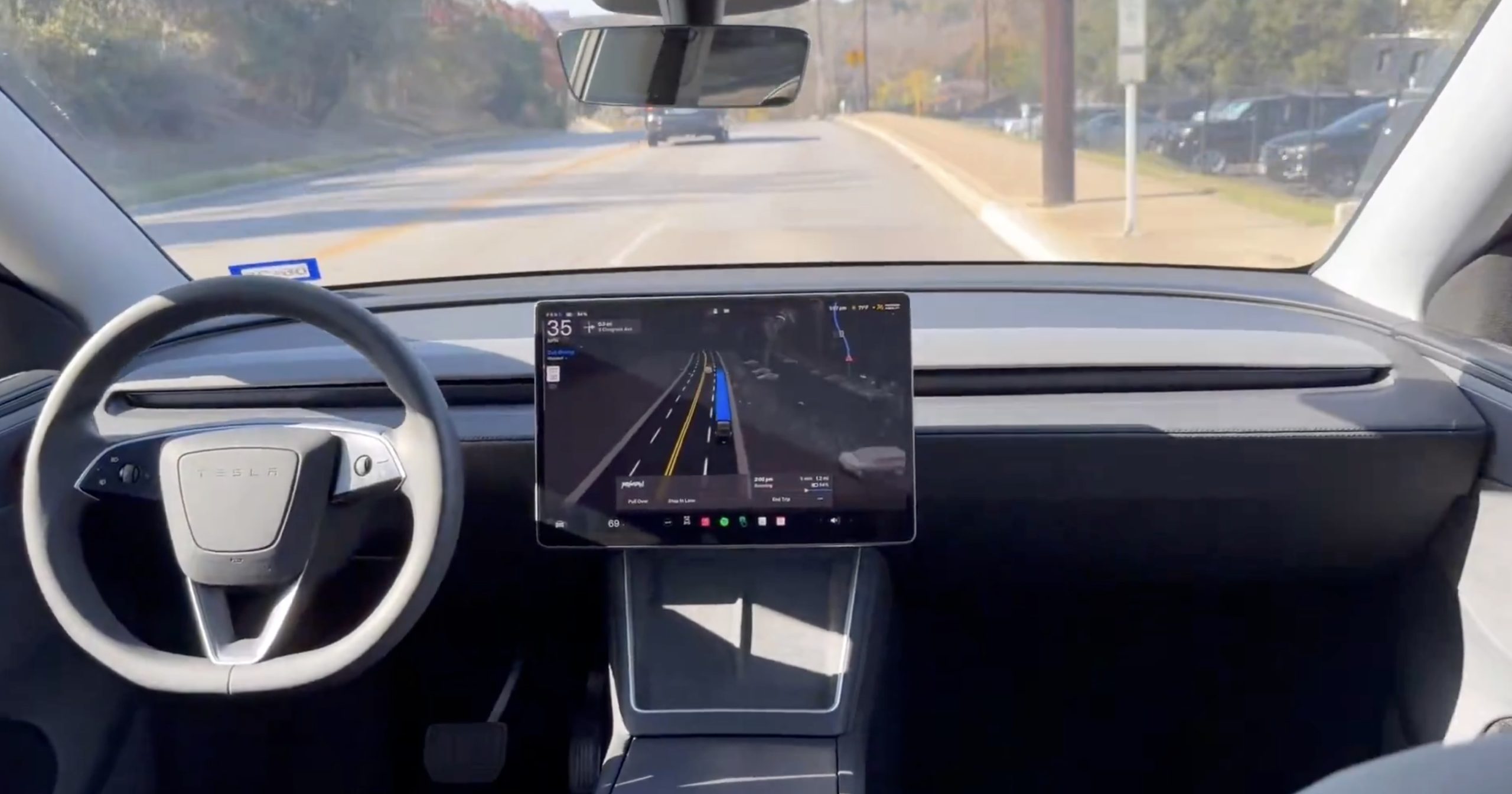
Tesla CEO Elon Musk and AI Director Ashok Elluswamy celebrated Christmas Eve by sharing personal experiences with Robotaxi vehicles that had no safety monitor or occupant in the driver’s seat. Musk described the system’s “perfect driving” around Austin, while Elluswamy posted video from the back seat, calling it “an amazing experience.”
The executives’ unoccupied tests hint at the rapid progress of Tesla’s unsupervised Robotaxi efforts.
Elon and Ashok’s firsthand Robotaxi insights
Prior to Musk and the Tesla AI Director’s posts, sightings of unmanned Teslas navigating public roads were widely shared on social media. One such vehicle was spotted in Austin, Texas, which Elon Musk acknowleged by stating that “Testing is underway with no occupants in the car.”
Based on his Christmas Eve post, Musk seemed to have tested an unmanned Tesla himself. “A Tesla with no safety monitor in the car and me sitting in the passenger seat took me all around Austin on Sunday with perfect driving,” Musk wrote in his post.
Elluswamy responded with a 2-minute video showing himself in the rear of an unmanned Tesla. The video featured the vehicle’s empty front seats, as well as its smooth handling through real-world traffic. He captioned his video with the words, “It’s an amazing experience!”
Towards Unsupervised operations
During an xAI Hackathon earlier this month, Elon Musk mentioned that Tesla owed be removing Safety Monitors from its Robotaxis in Austin in just three weeks. “Unsupervised is pretty much solved at this point. So there will be Tesla Robotaxis operating in Austin with no one in them. Not even anyone in the passenger seat in about three weeks,” he said. Musk echoed similar estimates at the 2025 Annual Shareholder Meeting and the Q3 2025 earnings call.
Considering the insights that were posted Musk and Elluswamy, it does appear that Tesla is working hard towards operating its Robotaxis with no safety monitors. This is quite impressive considering that the service was launched just earlier this year.
Elon Musk
Starlink passes 9 million active customers just weeks after hitting 8 million
The milestone highlights the accelerating growth of Starlink, which has now been adding over 20,000 new users per day.

SpaceX’s Starlink satellite internet service has continued its rapid global expansion, surpassing 9 million active customers just weeks after crossing the 8 million mark.
The milestone highlights the accelerating growth of Starlink, which has now been adding over 20,000 new users per day.
9 million customers
In a post on X, SpaceX stated that Starlink now serves over 9 million active users across 155 countries, territories, and markets. The company reached 8 million customers in early November, meaning it added roughly 1 million subscribers in under seven weeks, or about 21,275 new users on average per day.
“Starlink is connecting more than 9M active customers with high-speed internet across 155 countries, territories, and many other markets,” Starlink wrote in a post on its official X account. SpaceX President Gwynne Shotwell also celebrated the milestone on X. “A huge thank you to all of our customers and congrats to the Starlink team for such an incredible product,” she wrote.
That growth rate reflects both rising demand for broadband in underserved regions and Starlink’s expanding satellite constellation, which now includes more than 9,000 low-Earth-orbit satellites designed to deliver high-speed, low-latency internet worldwide.
Starlink’s momentum
Starlink’s momentum has been building up. SpaceX reported 4.6 million Starlink customers in December 2024, followed by 7 million by August 2025, and 8 million customers in November. Independent data also suggests Starlink usage is rising sharply, with Cloudflare reporting that global web traffic from Starlink users more than doubled in 2025, as noted in an Insider report.
Starlink’s momentum is increasingly tied to SpaceX’s broader financial outlook. Elon Musk has said the satellite network is “by far” the company’s largest revenue driver, and reports suggest SpaceX may be positioning itself for an initial public offering as soon as next year, with valuations estimated as high as $1.5 trillion. Musk has also suggested in the past that Starlink could have its own IPO in the future.
News
NVIDIA Director of Robotics: Tesla FSD v14 is the first AI to pass the “Physical Turing Test”
After testing FSD v14, Fan stated that his experience with FSD felt magical at first, but it soon started to feel like a routine.

NVIDIA Director of Robotics Jim Fan has praised Tesla’s Full Self-Driving (Supervised) v14 as the first AI to pass what he described as a “Physical Turing Test.”
After testing FSD v14, Fan stated that his experience with FSD felt magical at first, but it soon started to feel like a routine. And just like smartphones today, removing it now would “actively hurt.”
Jim Fan’s hands-on FSD v14 impressions
Fan, a leading researcher in embodied AI who is currently solving Physical AI at NVIDIA and spearheading the company’s Project GR00T initiative, noted that he actually was late to the Tesla game. He was, however, one of the first to try out FSD v14.
“I was very late to own a Tesla but among the earliest to try out FSD v14. It’s perhaps the first time I experience an AI that passes the Physical Turing Test: after a long day at work, you press a button, lay back, and couldn’t tell if a neural net or a human drove you home,” Fan wrote in a post on X.
Fan added: “Despite knowing exactly how robot learning works, I still find it magical watching the steering wheel turn by itself. First it feels surreal, next it becomes routine. Then, like the smartphone, taking it away actively hurts. This is how humanity gets rewired and glued to god-like technologies.”
The Physical Turing Test
The original Turing Test was conceived by Alan Turing in 1950, and it was aimed at determining if a machine could exhibit behavior that is equivalent to or indistinguishable from a human. By focusing on text-based conversations, the original Turing Test set a high bar for natural language processing and machine learning.
This test has been passed by today’s large language models. However, the capability to converse in a humanlike manner is a completely different challenge from performing real-world problem-solving or physical interactions. Thus, Fan introduced the Physical Turing Test, which challenges AI systems to demonstrate intelligence through physical actions.
Based on Fan’s comments, Tesla has demonstrated these intelligent physical actions with FSD v14. Elon Musk agreed with the NVIDIA executive, stating in a post on X that with FSD v14, “you can sense the sentience maturing.” Musk also praised Tesla AI, calling it the best “real-world AI” today.








